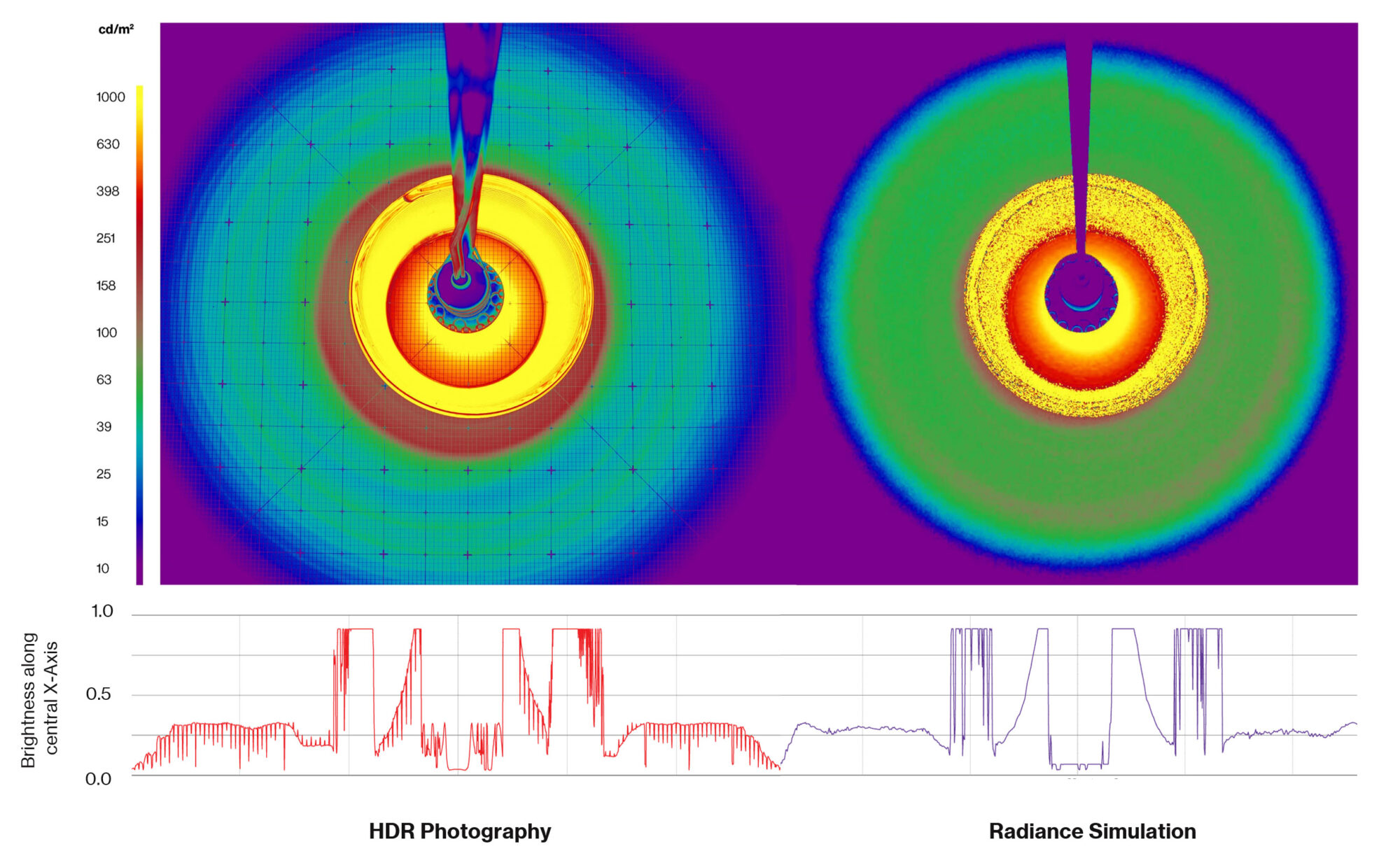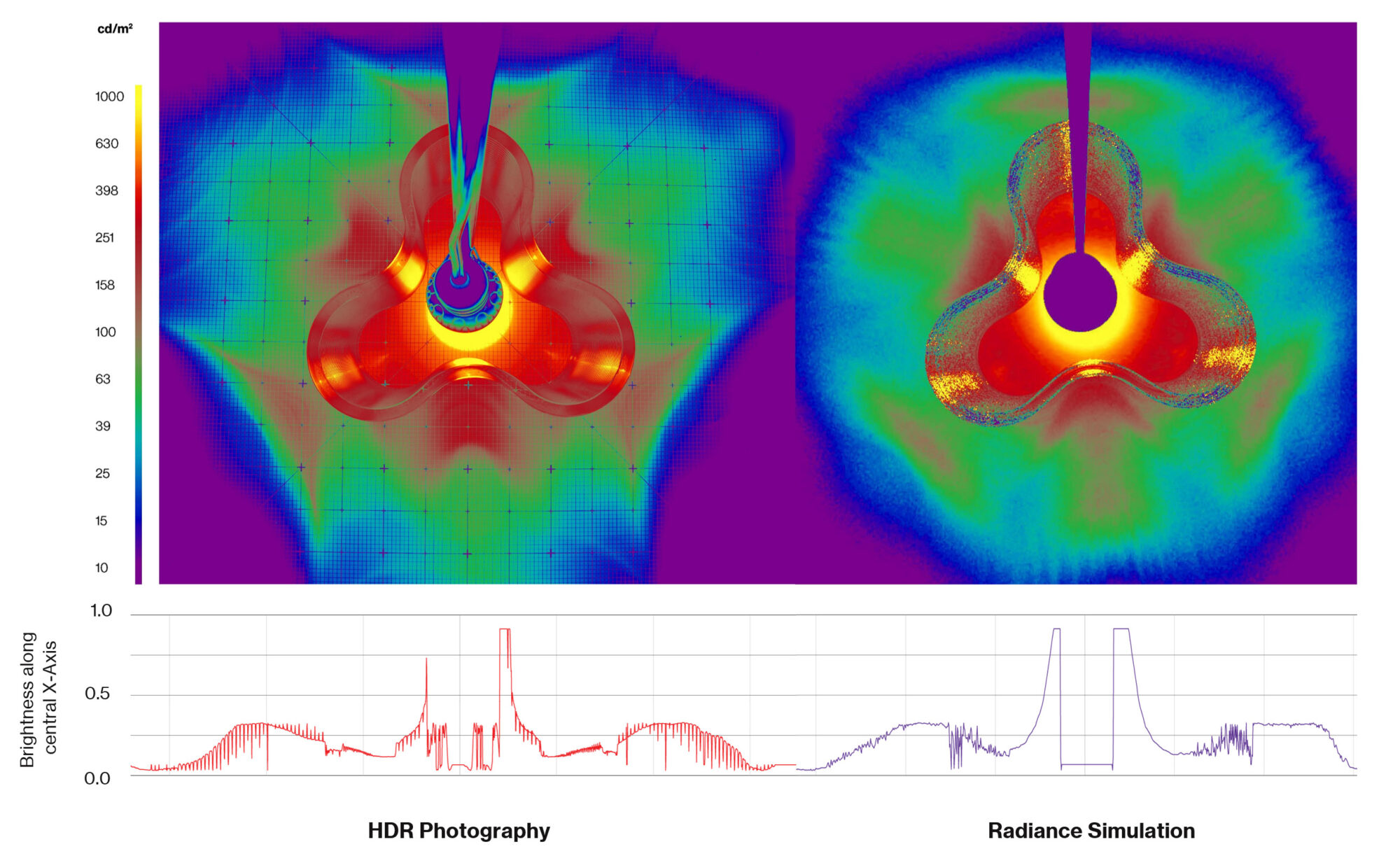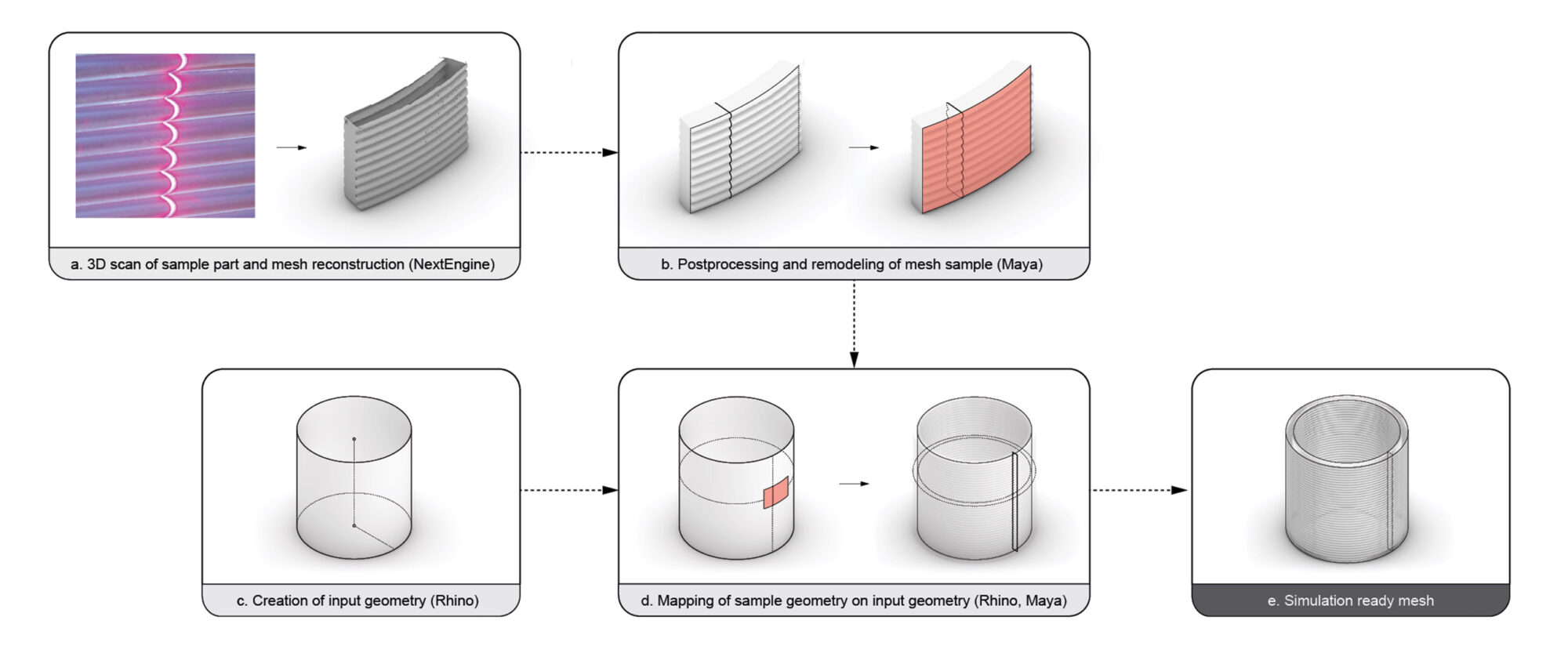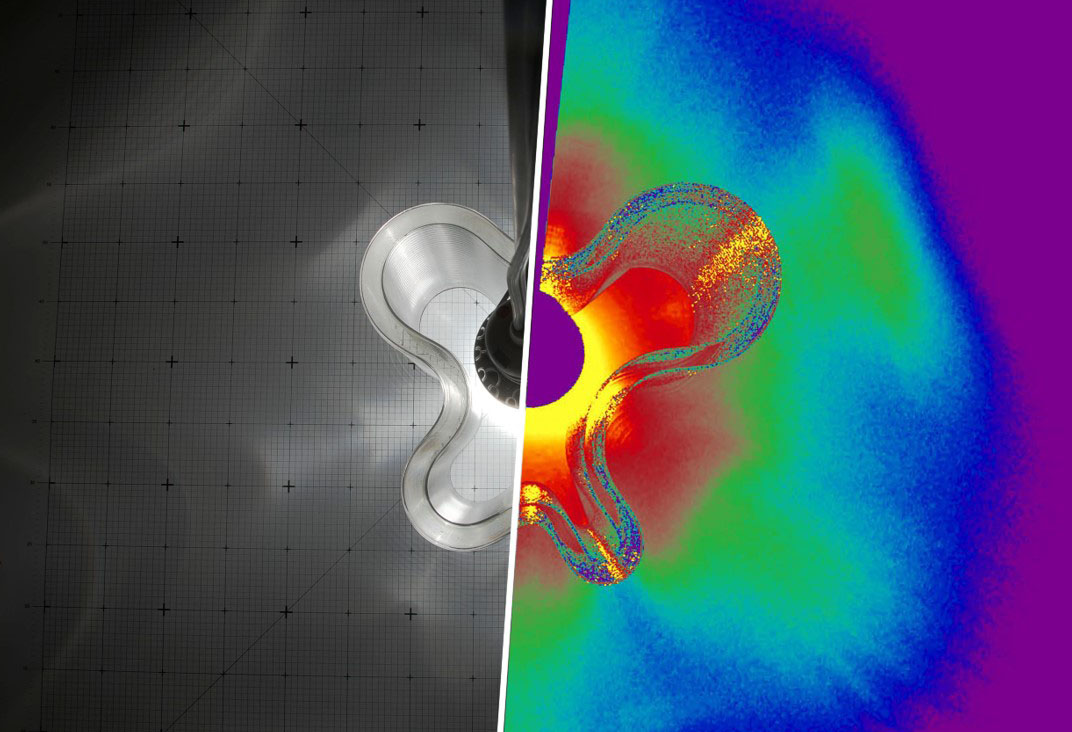Advances in digital fabrication and additive manufacturing have enabled the creation of geometrically complex glass structures and building components, opening up new design opportunities across scales. Quantifying and evaluating their optical performance, however, remains a technical challenge. In order to accurately predict light behavior, common approaches of daylight modelling utilizing light-backward raytracers are insufficient. This research evaluates the use of the photon mapping approach within the Radiance render engine to simulate artificial and natural lighting conditions. 3D printed optically transparent glass components are used to benchmark the simulations. We present a workflow to gather geometric data of the glass objects and a series of validation experiments. Pairs of physical studies and digital simulations are compared to assess optical performance in the context of both indoor and outdoor lighting conditions. These experiments demonstrate that the photon mapping approach can reliably measure and predict caustic light patterns and indoor light levels with some limitations, specifically of glare and scattered light from the glass objects themselves.
Photon Mapping of Geometrically Complex Glass Structures: Methods and Experimental Evaluation.Ramon Weber, Christoph Reinhart, Neri Oxman. Building and Environment, 2020
https://doi.org/10.1016/j.buildenv.2020.106957



